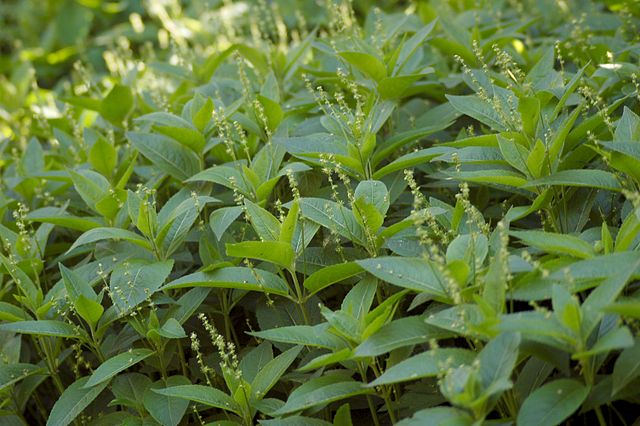 |  |  |  |  |
 |  |
Dog’s Mercury is a perennial plant, 10-80 cm tall with a creeping root. The plant is densely pubescent with short, simple hairs. The stem is upright, the leaves are arranged oppositely, whole, with small leaflets, placed on the leaf stalks (1-2 cm long), dark green, placed at the top of the stem.
Leaf plates are elongated, with a rounded base and a pointed tip, 2-6 cm long, 1-3 cm wide. The edges of the leaves are toothed. The flowers are small, inconspicuous, greenish, unisexual, arranged in a spike-shaped bunch inflorescence. Fruits are small, hairy nuts. Blooms in early spring, April-May.
The above-ground part of the plant is used for medicinal purposes. Harvest the plant during flowering. The drug is dried in dryers up to 50C or on sieves. Dried drug is no longer harmful and can be stored in paper bags for up to 1 year.
It is important to know that picking up the drug is dangerous and that is why it is done using rubber/latex gloves, because fresh grass can harm a person's stomach and urinary system. After working with the plant, wash your hands thoroughly.
From a chemical point of view, this plant has been studied enough to know that it contains phenolic acids (chlorogenic acid, p-coumaric acid in leaves), flavonoids (apigenin), nitrogenous acids (mercurialin, methylamine in leaves, germidine in stems). The highest fatty acids are found in the seeds.
Medicinal significance
The effect of Dog’s Mercury is provided by its chemical composition. The plant has diarrheic, diuretic, expectorant, etc. properties. In addition, this plant was widely used in the treatment of women's diseases during the time of Hippocrates (this is the main reason why the plant is so well studied). Used it to prevent disturbed and painful menstruation.
Also in folk medicine, the properties of this plant are already known historically. A flowering, dried plant was used for treatment. As it dries, it loses its poisonous properties.
In folk medicine, Dog’s Mercury is used as a mild laxative, as well as a diuretic and expectorant. Accordingly, it was used in cases of constipation, bronchospasm and similar problems.
Herbal tea is considered effective for reducing swelling, stimulating appetite, reducing spasms, treating gout and rheumatism. As well as to normalize the functioning of the digestive tract.
Dog’s Mercury tea has been used since ancient times to treat menstrual disorders. Folk medicine specialists keep this recipe even today.
Externally, the powder and fresh juice of the plant is used to relieve warts and blisters.
